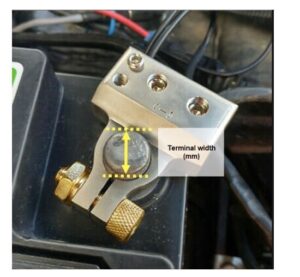Did you know that a racing car can complete a 900 m track in record time? It may seem incredible, but these incredibly powerful machines are capable of achieving such astonishing feats. From the deafening roar of the engines to the adrenaline-fueled atmosphere, the world of racing is an exhilarating experience like no other. In this article, we will delve into the realm of racing cars, exploring their remarkable capabilities and the thrilling world that surrounds them. So fasten your seatbelt and get ready for an exciting ride as we explore how a racing car can complete a 900 m track with lightning speed.
A Racing Car Can Complete a 900m Sprint: Exploring the Thrilling Speed and Performance
For car enthusiasts and fans of motorsports, the exhilarating world of racing cars holds a special allure. The sheer power, speed, and precision of these vehicles captivate our imaginations and fuel our passion for thrilling competition. One fascinating aspect of racing cars is their ability to cover impressive distances in astonishingly short periods of time. In this article, we delve into the incredible feat of a racing car completing a 900m sprint, highlighting the engineering marvels, techniques, and innovations that make it possible.
Unleashing the Power of Engines
At the heart of every racing car’s exceptional performance lies a powerhouse known as the engine. These engines, meticulously designed and fine-tuned, deliver unparalleled power and speed. Let’s explore the key elements that contribute to a racing car’s ability to complete a 900m sprint:
1. Engine Capacity and Displacement
The engine capacity, measured in cubic centimeters (cc) or liters (L), determines the volume of air and fuel mixture that can be combusted in the engine’s cylinders. Racing cars typically feature engines with larger capacities than regular road cars, allowing for greater power generation and acceleration.
The displacement, denoted in liters, refers to the total volume swept by all the pistons within the cylinders during one complete cycle. A higher displacement usually translates to a more powerful engine capable of producing substantial amounts of torque.
2. Turbocharging and Supercharging
To further augment engine power and torque, racing cars often incorporate turbocharging or supercharging technology. These systems force additional air into the engine, resulting in increased combustion, higher performance, and improved acceleration. By compressing and forcing more air into the cylinders, turbocharging and supercharging effectively boost the power output of the engine.
3. Aerodynamics and Downforce
Aerodynamics plays a crucial role in enhancing a racing car’s top speed and stability. The car’s body design, including the shape, contours, and various aerodynamic components such as spoilers and diffusers, are meticulously optimized to reduce drag and generate downforce.
Downforce, created by the interaction of the car’s body with the air, pushes the vehicle downward, increasing the tire grip and overall stability. This ensures that the racing car maintains traction, enabling it to maneuver effectively during high-speed sprints and cornering.
4. Lightweight Construction
Weight reduction is a critical consideration in racing car design. The lighter the car, the quicker its acceleration and the higher its top speed. Racing cars employ advanced lightweight materials such as carbon fiber and aluminum alloys, minimizing weight without compromising strength and safety.
Mastering the Art of Speed
While the power generated by a racing car’s engine is undeniably crucial, true speed mastery requires a combination of various factors. Let’s dive into the key components and techniques that enable a racing car to complete a 900m sprint:
1. Transmission and Gear Ratios
In order to harness and transfer the engine’s power to the wheels efficiently, racing cars utilize sophisticated transmission systems. These systems feature multiple gears and gear ratios optimized for specific racing scenarios, ensuring optimal performance at different speeds.
By selecting appropriate gear ratios, drivers can maximize acceleration during the sprint. Lower gears provide the necessary torque to launch the car off the starting line, while higher gears offer higher top speeds as the car gains momentum.
2. Traction Control and Launch Control
Traction control systems help racing cars maintain optimal tire grip on different surfaces and conditions. By intelligently managing the power delivery to each wheel, these systems prevent excessive wheelspin, allowing the car to accelerate swiftly without losing control.
Launch control technology further aids in achieving rapid acceleration. By optimizing the engine’s RPM and torque delivery during the start, launch control systems ensure the quickest possible takeoff, shaving off valuable milliseconds.
3. Suspension and Handling
Superior suspension and handling characteristics play a pivotal role in a racing car’s ability to navigate twists, turns, and other obstacles during the sprint. Suspension systems with adjustable settings enable drivers to fine-tune the car’s response to different track conditions, optimizing grip and stability.
Advanced technologies like active suspension systems constantly monitor and adjust the car’s suspension in real-time, enhancing performance during acceleration and cornering. These systems help maintain tire contact with the road, ensuring maximum grip and minimizing energy loss.
4. Racing Tires
The choice of tires significantly impacts a racing car’s performance. Specially designed racing tires offer superior grip, traction, and braking capabilities, allowing drivers to push the limits of speed and maneuverability. These tires feature advanced rubber compounds, specialized tread patterns, and robust construction to withstand the extreme forces encountered during a sprint.
The Role of Skilled Drivers
While the engineering marvels of racing cars play a critical role in achieving record-breaking sprints, skillful drivers are equally indispensable. Behind the wheel, talented drivers utilize their expertise, reflexes, and instincts to optimize the car’s performance and maneuver through the sprint. Some key driver factors include:
1. Throttle Control and Acceleration Techniques
Skilled drivers possess exceptional throttle control, expertly balancing power delivery and tire grip to achieve maximum acceleration. Understanding the intricacies of managing torque and throttle response allows them to unleash the full potential of the racing car.
Additionally, drivers employ techniques like heel-and-toe downshifting, where they simultaneously use the heel to blip the throttle while braking, ensuring seamless gear changes without sacrificing momentum.
2. Braking Precision
Braking is a critical aspect of completing a sprint successfully. Drivers must possess impeccable braking precision, ensuring they decelerate efficiently while maintaining stability and preparing for cornering maneuvers. Techniques like threshold braking, trail braking, and maintaining optimal brake temperature are employed to extract the most from the braking system.
3. Cornering Skills
During a 900m sprint, there are often multiple corners that demand precise and efficient maneuvering. Drivers adeptly navigate these corners by utilizing proper racing lines, maintaining the ideal speed, and managing weight transfer. Applying the correct racing techniques, such as trail braking, apex clipping, and maintaining smooth transitions, enables drivers to complete corners swiftly and maintain momentum.
4. Mental Agility and Focus
Racing at high speeds requires immense mental agility and focus. Drivers must make split-second decisions, anticipate the movement of competitors, and adapt to changing track conditions. Mental resilience and concentration are paramount for drivers to maintain control and optimize their performance throughout the sprint.
The Thrill of a 900m Sprint
The excitement and adrenaline of witnessing a racing car completing a 900m sprint are truly unparalleled. The combination of cutting-edge engineering, technological advancements, and the skillful interaction between drivers and their machines make it possible for these mesmerizing vehicles to achieve remarkable speeds and break records.
Next time you witness a racing car streaking across the track and effortlessly conquering a 900m sprint, take a moment to appreciate the dedication, craftsmanship, and teamwork required to accomplish such a breathtaking feat.
H2R Kawasaki vs 900hp Muscle Car – drag racing
Frequently Asked Questions
How long does it take for a racing car to complete a 900 m?
A racing car can typically complete a 900 m race in a matter of seconds, depending on various factors such as track conditions, car speed, and driver skill.
What factors affect the time it takes for a racing car to complete a 900 m?
The time it takes for a racing car to complete a 900 m race can be influenced by several factors, including the car’s horsepower, aerodynamics, tires, weight distribution, track conditions, and the skill level of the driver.
Can all racing cars complete a 900 m race in the same time?
No, not all racing cars can complete a 900 m race in the same time. The time it takes depends on the specific characteristics and performance capabilities of each car. Cars with higher horsepower, better aerodynamics, and skilled drivers generally have faster completion times.
Is a 900 m race considered a short or long distance for a racing car?
From the perspective of racing car competitions, a 900 m race is generally considered a relatively short distance. Longer races, such as those held on professional circuits, can range from several kilometers to hundreds of kilometers.
What is the average speed of a racing car during a 900 m race?
The average speed of a racing car during a 900 m race can vary depending on the factors mentioned earlier. However, top-performing racing cars can reach speeds of over 300 km/h (186 mph) on straight portions of the track.
Final Thoughts
A racing car’s ability to complete a 900 m course demonstrates its remarkable speed and agility. This feat showcases the tremendous power and precision harnessed by these high-performance vehicles. With their finely-tuned engines, aerodynamic design, and skilled drivers, racing cars deliver an exhilarating experience for enthusiasts and spectators alike. As the car zooms across the track, it captivates audiences with its lightning-fast acceleration and flawless maneuverability. Witnessing a racing car complete a 900 m distance is a testament to the engineering prowess and driving prowess of these impressive machines.



